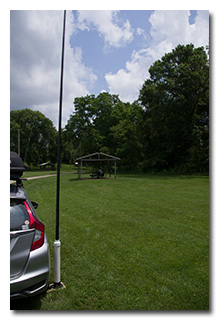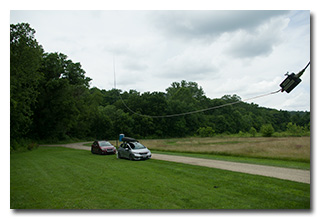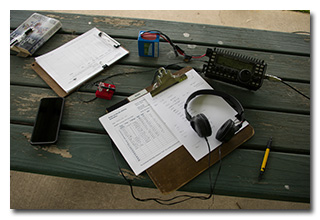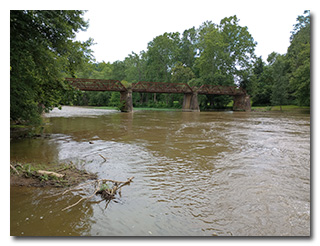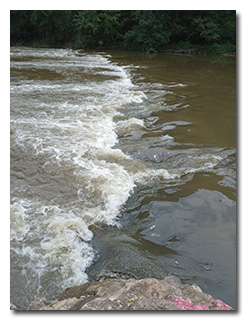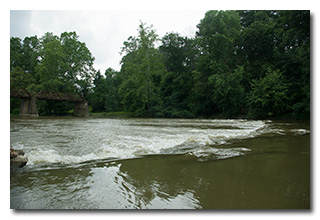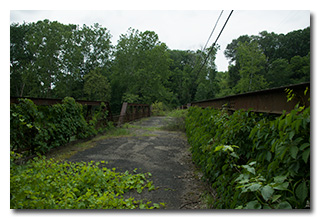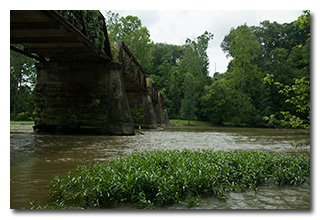
by William Eric McFadden
From the Mohican River Wildlife Area website:
-
The 474-acre Mohican River Wildlife Area, in east-central Ohio, consists of two separate units approximately 5½ miles apart on the lower reaches of the Mohican River. The 121-acre upstream unit is at the village of Brinkhaven and is readily accessible from State Route 62. The lower unit, 353 acres in size, lies about one mile south of the village of Cavallo on Tiverton Township Road 368. A mixture of woods, reverting old fields, and cropland occupies the river valley bottomlands and hillsides of these two units. The upland woods are predominantly oak-hickory. Elm, ash, silver maple, and sycamore are common species bordering the Mohican River. The stretch of Mohican River which flows through the wildlife area averages over 100 feet wide and is comprised of relatively long, moderately deep pools with occasional riffles.
Pictures
- The Mohican River Wildlife Area sign
- Eric's station; photo by Miles McFadden
- Eric's station
- Eric's 40m EFHW antenna
- The bridge that Google doesn't know has long been impassable
- The bridge, clearly impassable; photo by Miles McFadden
- The bridge, viewed from below; photo by Miles McFadden
- The Brinkhaven Lowhead Dam on the Mohican River
- The Brinkhaven Lowhead Dam and bridge; photo by Miles McFadden
Description
On Sunday, July 9, 2023, two members of the Southeast Ohio Radio Adventure Team performed a successful activation of Mohican River Wildlife Area (K-9483) in Ohio as part of the Parks on the Air (POTA; link) program.
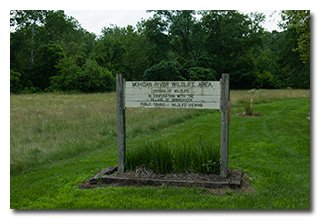 Following a successful two-fer activation of Clear Fork Gorge State Nature Preserve and Mohican-Memorial State
Forest (link), Eric McFadden, WD8RIF, and Miles McFadden, KD8KNC,
visited Mohican River Wildlife Area at the village of Brinkhaven.
Following a successful two-fer activation of Clear Fork Gorge State Nature Preserve and Mohican-Memorial State
Forest (link), Eric McFadden, WD8RIF, and Miles McFadden, KD8KNC,
visited Mohican River Wildlife Area at the village of Brinkhaven.
After having to find an alternate route because Google directed them to cross a bridge that has been out of service for a really long time, the pair arrived at the Brinkhaven parking area at about 1740 UTC to hear the sound of roaring water, to see bluebirds flying around, and to find two unoccupied picnic shelters and lots of room to deploy a serious wire antenna. Supporting his 31' Jackite telescoping mast on a drive-on base, Eric deployed his 40m end-fed halfwave (EFHW) antenna as a sloper, securing the feedpoint end at the picnic-shelter and sloping the radiator up to the top of the Jackite mast. Setting up his KX3 on a picnic table and connecting the antenna through a 25' length of RG-58 coax, Eric was on the air at 1751 UTC.
Eric was pleased to find he had good cell-signal at this location and would be able to spot himself on the POTA Spots website and to use POTA Spots to identify possible Park-to-Park (P2P) QSOs.
Eric began his operation on 20m by finding himself a frequency to run, calling "CQ POTA", and spotting himself on POTA Spots. His first QSO came at 1754 UTC with WC0Y in North Dakota. QSOs came steadily, with Eric's ninth QSO coming at 1811 UTC with KN5JAH in Texas. This run included QSOs with operators located in North Dakota, Idaho, Florida, Illinois, Texas (4), and New Mexico.
Pausing to check POTA Spots for P2P QSO opportunities, at 1811 UTC Eric was chuffed to complete a P2P QSO on 15m with KL7AC in Harding Lake State Recreation Site (K-7234) in Alaska.
Returning to run a frequency on 20m, at 1816 UTC Eric completed a QSO with N5JGE in Texas.
Switching to 40m to run a frequency, at 1823 UTC Eric made a QSO with W9WPY in Indiana. This was followed at 1824 UTC by a QSO with Eric's good friend Mike, K8RAT, who was only thirty-five miles away in Ohio. Finally, at 1825 UTC, Eric completed a QSO with WB8DTT in Michigan.
Switching to 40m to run a frequency, Eric's first and only QSO there came at 1546 UTC with K3AHP in Pennsylvania.
In all, Eric made fourteen QSOs, with one P2P QSO, in thirty-four minutes of on-air time. All of Eric's QSOs were CW and were made at five watts output.
Miles did not operate but helped with station set-up and tear-down and did much of the activation photography.
(return)
